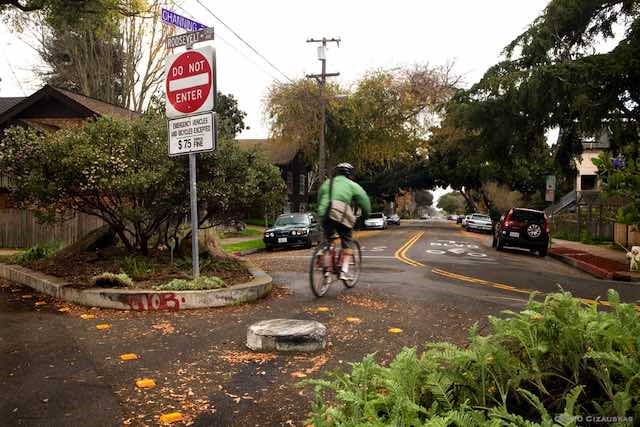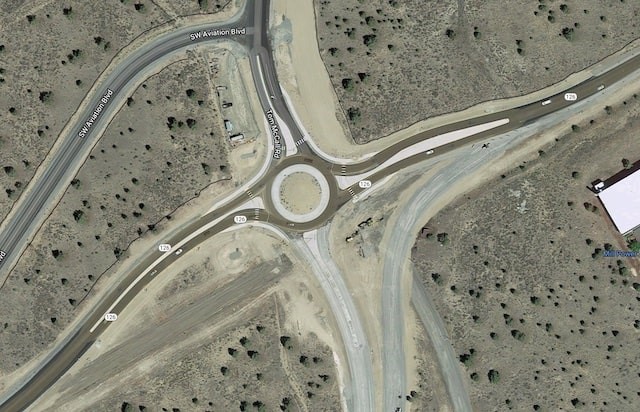By Randal O’Toole, The Antiplanner
Editor’s Note: The NMA has received permission to post this report on recent findings on traffic safety in the US. Read Parts 1 and Part 2 for more information.
Data-Driven Safety
Such data-driven analyses play almost no role in urban traffic safety programs today.
For example, Vision Zero is based on the simplistic idea that “People hit by fast cars are more likely to die than people hit by slow cars, so therefore slowing down traffic is the sole measure to be taken to improve safety.”
Cities such as Portland have been implementing this idea for several decades, and the increase in traffic fatalities in those cities proves that it doesn’t work. Beyond that, it imposes huge costs on society: according to the Texas Transportation Institute, traffic delays cost Americans $190 billion in 2019, and deliberately slowing traffic merely adds to those costs.
Such simplistic planning also ignores the needs of freight movement. According to the Bureau of Transportation Statistics, highways in 2018 (the latest year for which data are available) moved slightly more than 2.0 trillion ton-miles of freight at a cost to shippers of 20.2¢ per ton-mile for a total of $410 billion. For comparison, the Bureau of Economic Analysis says Americans spent $1.2 trillion buying, operating, maintaining, and insuring personal motor vehicles in 2018.
That means 25 percent of the value of roads and streets is due to their ability to move freight. Yet freight is hardly considered by planners when designing their regional transportation plans. Mindless slowing of traffic by, say, 20 percent increases costs to freight companies by forcing them to buy 20 percent more trucks and hire 20 percent more drivers.
Transportation system managers need to replace such simplistic ideas with a data-driven program aimed at designing safety into urban and rural roads.
Such a program must identify which roads and which kinds of roads are most dangerous, what times of day accidents take place, and how roads can be redesigned to make them safer.
For example, the safest roads are freeway arterials in most urban areas, while the most dangerous, killing the most people per billion passenger-miles, are non-freeway arterials. Freeways are safer due to the separation of pedestrians and cyclists and the elimination of cross traffic.

Bicycle boulevards, such as this one in Berkeley, use local streets parallel to major collectors or arterials and apply a few barriers to allow local automobile traffic and through bicycle traffic. Photo by Carrie Cizauskas.
This suggests that non-freeway arterials could be made safer by reducing the number of intersections with other streets and using lights or other improvements to make the remaining intersections safer. Bicycle traffic could be separated from the arterials by developing bicycle boulevards on parallel routes with less auto traffic. Pedestrian safety could be addressed by using barriers to discourage pedestrians from crossing at unmarked locations, improving lighting in areas where nighttime pedestrian accidents are known to take place, and providing pedestrian overpasses at the most dangerous intersections.

This roundabout forces traffic on the heavily used east-west road to slow from 65 to 25 mph, sometimes causing lengthy back-ups to avoid a traffic light or overpass for the lightly used north-south road. A larger roundabout would have allowed faster speeds and avoided congestion.
Many states install roundabouts, which often needlessly reduce traffic speeds, sometimes from 65 to 25 miles per hour. They have been proven to reduce auto collisions but may increase pedestrian accidents and certainly reduce walkability as they require pedestrians to walk much further distances to cross a street. One solution is to make roundabouts larger, allowing higher traffic speeds combined with pedestrian overpasses.
Using data-driven systems, motor vehicle manufacturers have already made tremendous steps towards improving the safety of both automobile occupants and pedestrians, but further work can be done.
For example, some cars have automatic emergency braking systems to avoid collisions even if the vehicle is going 45 miles per hour. In comparison, other devices only work at 25 miles per hour or less. Some cars have systems that are supposed to brake when they detect pedestrians or cyclists, but their effectiveness is mixed. Installing improved emergency braking systems on all new vehicles will help increase both pedestrian and occupant safety.
Some changes in bumper design that would reduce pedestrian injuries conflict with a federal requirement that cars suffer no damage in a 5-mile-per-hour collision. The 5-mph bumper standard was supposed to reduce repair costs, but instead, it increased them as it forced manufacturers to install bumpers that cost more to replace in the event of damage at higher speeds. This standard should be eliminated in favor of one that will increase pedestrian safety.
Safer transit means buses, not rail lines. Buses have been involved with the fewest fatalities, per billion passenger-miles, of any major transit mode, and buses are also less expensive than any rail mode.
Proponents of rail transit, particularly light rail and streetcars, clearly are uninterested in improving urban safety.
These are some things that could be done, but what is actually done should depend on data gathered from accident reports.
Logically, this could be done by the National Highway Traffic Safety Administration. A 2020 Government Accountability Office report noted that the NHTSA data collection system is inconsistent. The agency “lacks an evaluation plan with criteria to assess whether to expand” the data it collects.
The Biden administration proposed to spend “$20 billion to improve road safety for all users, including increases to existing safety programs and a new Safe Streets for All program to fund state and local Vision Zero plans.”
It would be better to spend this, or whatever amount of money is allocated to road safety, by giving NHTSA a mandate to improve its accident reporting and analysis system with the aim to identify ways to design more safety into the existing road and street designs.
Some people use safety issues to justify their goal of eliminating, or at least greatly reducing, the use of automobiles. But those who truly believe in transportation safety regardless of mode should support a data-driven process of identifying and implementing safer roadway designs, motor vehicles, and transit systems.
Randal O’Toole, The Antiplanner, is an economist with forty-five years of experience critiquing public land, urban, transportation, and other government plans.






